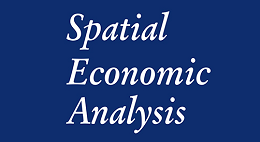Measuring industry co-location across county borders
The location quotient (LQ) measures regional industry concentration with the advantages of easy calculation and interpretation. However, it is a weak method for identifying industry clusters that consist of related industries geographically concentrated in contiguous counties. This paper proposes a new spatial input–output location quotient (SI-LQ) accounting for both the co-location of related industries and the spatial spillover of concentration into neighbouring counties. A bootstrap method is used to determine the cut-off values of the new measure. The practical advantages of the SI-LQ over the traditional LQ include attenuation of the extreme values of the LQ in less populous and remote counties and the identification of large substantive clusters. The SI-LQ outperforms the LQ in a regression analysis of the effect of industry concentration on total employment growth.


